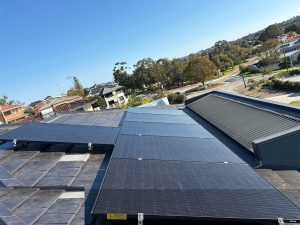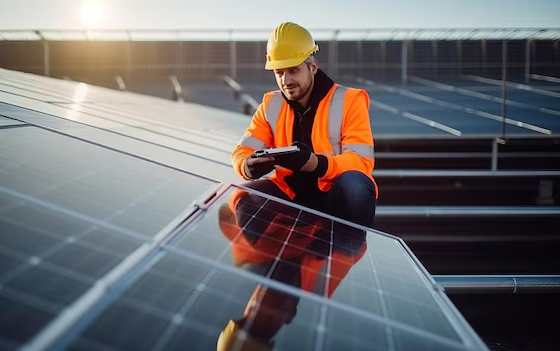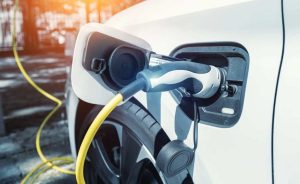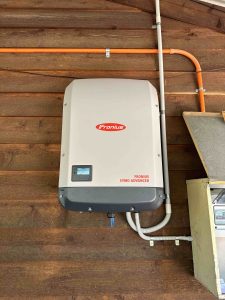A rooftop solar system can power homes or businesses in the daytime. It means customers rely on high-cost grid electricity when the sun goes down. But, this can be changed with solar battery installation. Your solar PV system may be producing more solar power than you need in the day. Instead of slowing down A solar battery will store the excess electricity generated for later use.
Selecting a good solar battery storage system in Australia can be a daunting task, as there are many factors to consider. Capacity, Brand and Quality, Compatibility, Warranty, Price, etc. are some of the factors. Here are some tips that can help you select the right solar battery storage system.
Solar Battery capacity
According to the Clean Energy Council, solar battery installation may judiciously use your excess energy generation in peak hours, save you from grid reliance and high electricity bills, and reduce your carbon footprint.
Your battery energy storage system may vary on the basis of design or chemical composition. a system designer would be able to help you choose from these:-
Off the Shelf System
This system has predefined energy goals and limitations on power. the inverter and battery would be of the same manufacturer and would need customisation before installation.
Semi-Customised System
Inverter and battery are from different manufacturers with different warranties. It is more customisable and flexible in energy and power limits.
Fully Customised System
Designer customises the solar battery system according to the needs and connects it with a customisable inverter. Thus, it makes this system more efficient, flexible, complex and refined.
Mainly, two types of batteries are available in the market:
Lithium-ion Battery
It has the following advantages:
● High capacity, storage, depth of discharge and voltage
● Light weight and compact
● less maintenance and long life
Lead Acid Battery
● Cheaper than Lithium Ion
● Easily accessible and less complex
● Sustainable
Some of the lesser known options are Nickel-Cadmium, Nickel Metal Hydride and Flow batteries which are yet to be introduced to the mainstream.
Solar Battery Round Trip Efficiency
Round-trip efficiency refers to the percentage of electricity stored in a battery that can later be retrieved. A higher round-trip efficiency means that less energy is lost during the process of storing and retrieving electricity.
To understand the solar battery round trip efficiency, we will have to know:
● how much energy is produced by rooftop solar system as DC power.
● how much of it goes to inverters and get stored
● how much energy comes as the output
We lose 0.5-5% of energy in DC to AC conversions. AC coupled batteries like Tesla Powerwall would have 90% to 89% RTE.
Battery Brand and Price
In Australia, the typical price range for solar batteries is between $1,000 to $2,000 per kilowatt hour (kWh) of storage capacity. So, for a battery with a storage capacity of 4kWh, the estimated cost would be around $4,000 to $8,000.
There are many solar battery brands available for you to get the right fit, such as:
- Tesla Powerwall
- Huawei LUNA
- QCells
- SENEC
- Redback Technologies
- Solar Edge DC Edge
- LG Chem
- BYD
- Enphase Encharge
Depth of Discharge
In simple words, it means how much power can you effectively use from your solar battery without causing any permanent damage to the battery. For example, Depth of Dicharge for a Lithium -Ion Battery is 50%. It means you can use only 50% of the power stored. but most Lithium-Ion batteries would have 80% to 95% DoD.
Certified Installer
You should always get your solar battery installed by a certified installer. Only the professionals can guide you about the suitable product that fits your requirement. Certified installers also provide warranties on both product and services. Therefore, a brand which has been there for more than 10 years should be trusted.
Warranty and Lifespan
A Solar panel may last 25-50 years provided it has been taken care of and maintained properly. The majority of solar panels available today in the market have an annual degradation rate of 0.5%, which means that they will continue to function at 90% capacity even after 20 years of use. Consequently, even after 50 years, these panels might still generate electricity. it would be at a lower rate than their initial capacity though. With appropriate maintenance and cleaning, it is possible for solar panels to have a longer lifespan than anticipated. Many companies operating nowadays can offer 20 years of warranty on solar panels.
Although solar batteries available in the market usually come with a 10-year warranty, their actual lifespan is closer to 20 years with proper usage. To ensure optimum use of your solar battery it is important that your solar battery is located where it is sheltered from severe weather conditions.
Australia is a country which receives 6-7 hours of sunlight on an average and thus, it has great potential in renewable solar energy. Given the technology and financial support provided by the government, it is high time that you switch to solar battery integrated PV panel.








